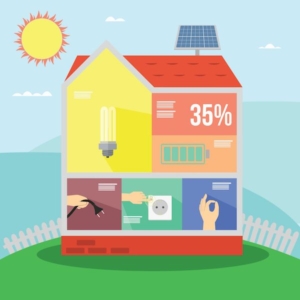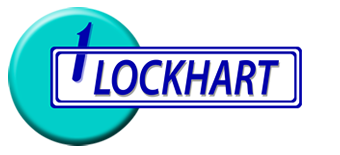Learn How to Monitor Energy Usage in Your Household
Did you know up to 20% of your energy costs might be wasted?
That energy efficiency gap shows up as an increase in your energy bills. That waste of energy (and money!) is a major reason why it’s so important to create an energy-efficient home.
It wasn’t all that long ago when the average household used to have just a few appliances, lights, radio and a small television. Nowadays we have heating and cooling systems, computers, phone chargers, routers, home theatres, pool filters, security systems, the list goes on.
Even while turned off or in standby mode, something can still be using energy. So, what are your home’s energy performance “trouble spots”, and how can you help your house become more energy efficient? Factors in your home’s energy efficiency can include the building envelope of your house, the age of your appliances, and of course, your energy-use habits.
Is Your Home Airtight? Check Your Insulation Levels
Locating and sealing air leaks in the home can net you 10% to 30% in energy savings. Consider checking your doors and window frames to see if they’re airtight or if they need replacing by a professional.
Also check less obvious areas like baseboards, flooring, junctures of the wall and ceiling, areas where two different building materials meet, lighting fixtures, plumbing fixtures, switches, and electrical outlets. All water heater and furnace ducts should be insulated as well. Caulking and foam is your best friend when dealing with these troublesome areas.
The older the house, the lower the level of required insulation at the time of construction. You can seal all the drafts, but if your insulation is less than the recommended minimum, your potential savings could literally fly out the (single-paned) window.
Check the quality of the insulation in the attic, exterior and interior basement walls, ceilings, floors, and crawl spaces. Proper insulation should keep you cool during the summer, and warm during the winter. In other words, it should prevent warm air from leaving, and hot air from entering.
One very simple switch is to install insulated curtains. Good-quality curtains and drapes will help keep the cold out during the winter, and will reduce incoming heat during the summer.
How To Measure Electricity Usage At Home
The “Kilowatt Hour” or “kWh” is a measurement of energy, which tells you how much energy is used over a certain time period. So, if a device or appliance is rated to use 1 kilowatt of power, and if it operates for 1 hour at that level, it sustains 1 kWh of energy.
Did you know: According to Energyrates.ca, the average Canadian household consumes 19.0 kWh per day. That’s approximately 6,920 kWh of electricity a year.
One option is a basic “plug load” monitor, which plugs directly into an outlet with any of your devices or appliances. This energy use monitor can track and auto-calculate how many kilowatts will be used in a day, month, or even a year. This provides an instant estimate for a single device or appliance, but what about the rest of the house?
Whole-house electricity monitoring tools might be the better way to go. While some systems can be easily installed by the homeowner, professional installation by a team like our technicians at Lockhart Industries is highly recommended. Whether or not you use household monitors or individual appliance monitors, this will eliminate the guessing game of what is wasting your energy and give you better peace of mind.
Did you know lights alone account for 10% of your energy bill? Consider using compact fluorescent lamps (CFLs), or light-emitting diodes (LEDs) light bulbs instead. Unlike incandescent bulbs, LEDs and CFLs create light, rather than relying on heat to create light. This dramatically reduces the amount of energy needed to light up a space, and these types of bulbs last for years. Installing sensors, dimmers, or timers for your lights can also help reduce your energy consumption.
Upgrade Your Equipment
Chances are the major cause of wasted household energy is from outdated heating and cooling equipment in need of a professional tune-up or replacement. Hiring a professional to inspect, clean and replace air filters can make a huge difference. They can spot potential problems, which means avoiding more costly bills in the future. However, purchasing new equipment will be much more energy-efficient.
Replacing the majority of your home’s appliances with “Energy Star” rated appliances could reduce your home’s energy use by 35%. Updating to newer and more energy-efficient electronics such as computers or televisions can help drop the energy bill too.
Install a Smart Thermostat
This is a programmable thermostat that will let you set temperatures based on your schedule, and will eventually learn your habits to lower or raise the temperature on its own. You can even connect your phone so the system can detect where you are, and when you’re not home. This is a great way to ensure your heater or air conditioner isn’t going full blast when no one is home to enjoy it. In fact, adjusting your temperature down by as little as 7℃ for about 8 hours per day can potentially cut your energy costs by 10%.
Monitoring and assessing your energy efficiency can seem like a big job. However, an assessment from a licensed professional can easily help identify potential problems and get your home on the way to becoming more energy efficient.
Consider GeoExchange for Your Highly-Energy Efficient Home
Have you considered using GeoExchange? This is a heating and cooling system that utilizes the earth’s natural and consistent temperature to regulate the temperature inside your home by way of a geothermal or water-source heat pump. Not only is this energy-efficient, but it’s also the most environmentally friendly and cost-effective way to distribute warmth into your home. Yes, GeoExchange is a high capital cost but the savings are so dramatic, 80-85% savings, that they pay for themselves with more to spare.
At Lockhart Industries, we’ve been proudly serving happy customers since 1981. Our experts will deliver high-quality, innovative and energy-efficient solutions for your home. To learn more, please contact us for professional service in South Vancouver Island. Call (250) 748-1731 or request an estimate and get started today.
Easy Financing with…
Start Saving Money NOW! There’s no need to putting off a more Energy Efficient, Cost Effective home comfort system. We make it simple!
With Financeit you can:
- Make additional payments any time without penalty.
- Get a lower payment by choosing an amortization period of up to 180 months. 7.99% to 11.99% interest rate.*
- We add a small fee to the loan amount. There are no hidden or additional charges
- Bank-level encryption (AES-256 bit SSL) to protect your personal information.



